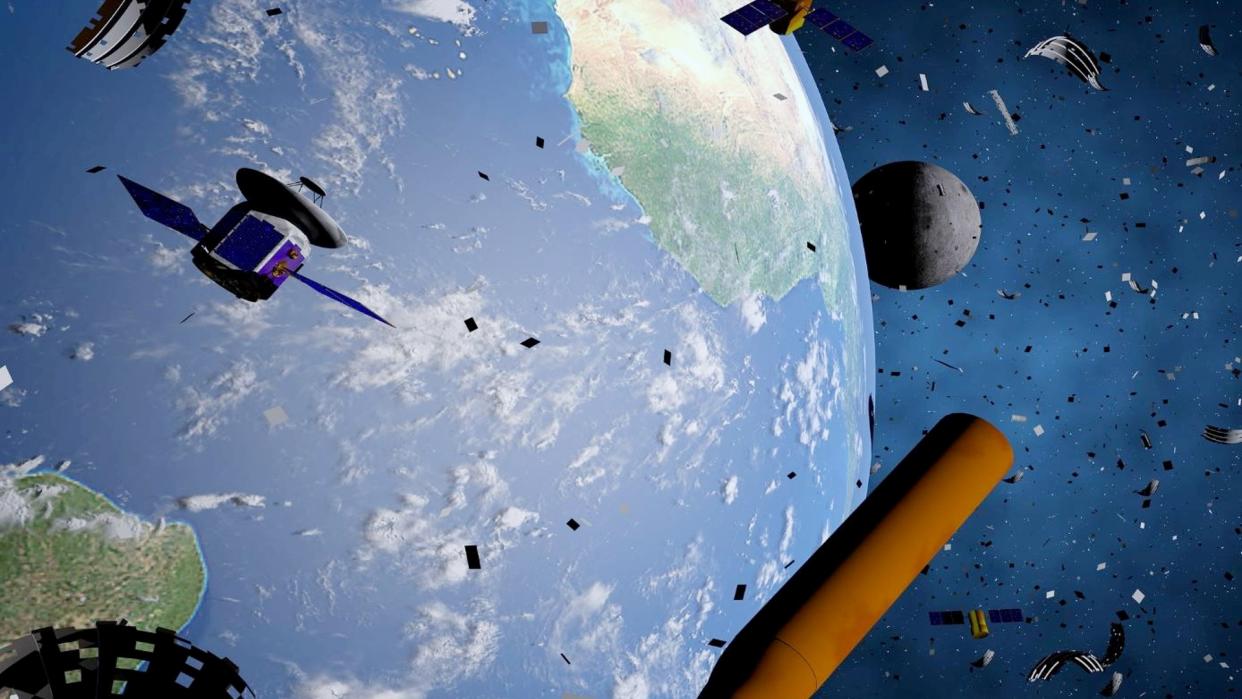FAA proposes rule to reduce space junk in Earth orbit

The U.S. Federal Aviation Administration (FAA) wants to lighten our planet's space-junk load.
The FAA — which, among other duties, awards launch licenses — has proposed a rule that would limit the amount of time that private rockets' upper stages stay in orbit.
The proposed rule, which the FAA released in draft form on Wednesday (Sept. 20), seeks "to limit the growth of new orbital debris and reduce the potential for collisions with spacecraft and satellites to promote a sustainable space environment," the agency wrote in a statement on Wednesday.
Related: Taking out the trash: Here's how private companies could be vital for space debris removal
The potential regulation would give commercial launch operators five disposal options for their upper stages (the part of the rocket that deploys the payload). Those options are, in the FAA's words:
Conduct a controlled reentry;
Move the upper stage to a less congested storage or graveyard orbit;
Send the upper stage on an Earth-escape orbit;
Retrieve the upper stage (called active debris removal) within five years; or
Perform an uncontrolled atmospheric disposal.
If companies opt to let their upper stages fall uncontrolled from low Earth orbit, they'll have 25 years for that to happen, according to the draft rule, which you can read here. But it leaves open a more accelerated timeline.
"Given that the entire mission lifetime of upper stages and their components is quite short, and spent upper stages pose a significant risk of debris propagation the longer they are in orbit, it may be appropriate to have a shorter disposal timeline of 5 years or another time period less than 25 years," the proposed rule states.
"Shortening the removal deadline would decrease the risk of orbital debris causing damage to spacecraft, which could create more debris, shorten another spacecraft’s mission or endanger the lives of human spaceflight participants," it adds.
RELATED STORIES:
— 2 big pieces of space junk nearly collide in orbital 'bad neighborhood'
— Clearspace-1 space debris cleanup target in orbit just got struck by space debris
— Private company wants to clean up space junk with 'capture bags' in Earth orbit
Such regulations would help mitigate the threat from space junk, which is already considerable, given how crowded Earth orbit is getting.
"As of July 2023, the number of orbital objects sized 10 cm [4 inches] or greater is estimated to be over 23,000," the FAA wrote in the Wednesday statement. "Recent debris projections estimate a total of one-half million objects sized between 1 and 10 cm [0.4 to 4 inches] on orbit, and over 100 million objects larger than 1 mm."
The proposed rule will be published in the Federal Register in the next few days. That milestone will kick off a 90-day public comment period, FAA officials said.

